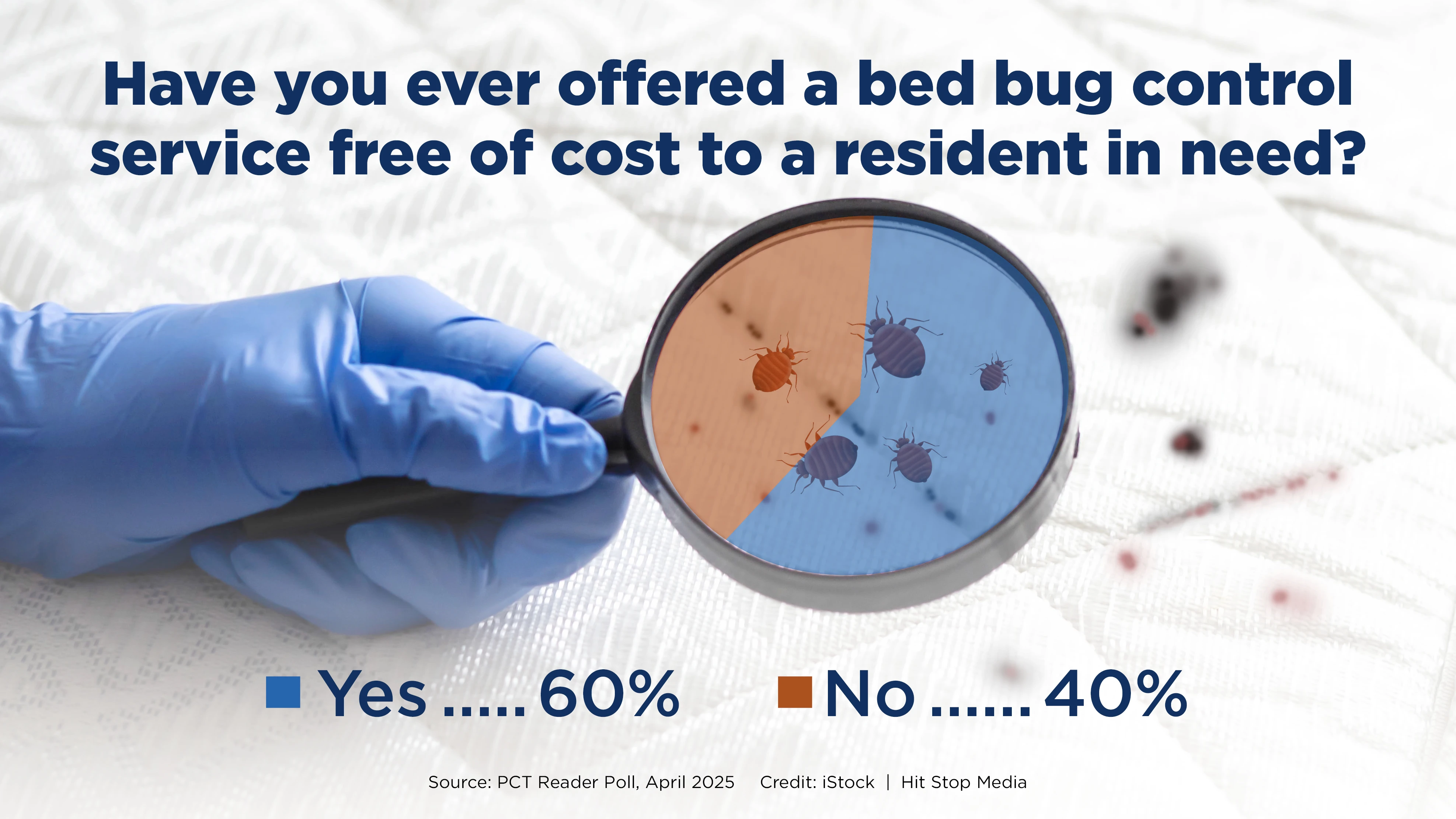Fred Strickland, service and technical vice president at Terminix, presented tips for creative approaches to termite management at PestWorld 2008, which was held in October near Washington, D.C. He told attendees that they needed to combine skills and craftsmanship from the past with the knowledge and technological advancements of the modern age.
“We have to leave the old mentality behind, filter through that chlordane mentality,” he said. “We want to forget the past but we don’t want to forget the past.”
NEW METHODS, SAME RESULTS. Strickland said termite management boils down to a two-step procedure: Find the termites’ point of entry and treat it. “Plug the hole. That’s how you do it,” he said.
But now, PCOs have many options available when deciding how to manage termite infestations, from the lowest technology to the highest technology, including: stainless steel mesh, carbon dioxide detectors, moisture meters, thermal imagers — even dogs.
“We live in a video game society,” Strickland said. But with all the technological advancements in termite control, success still depends on the technician’s ability to understand each account’s problems. A technician, he said, needs to be “a craftsman and understand how termites enter a building.
“When it boils down to it, you’ve got to put the termiticide where they are. However you detect it,” he said.
Strickland said a good flashlight is a basic tool for any termite inspection. “But it’s how you use the flashlight,” he said. “Lay the flashlight against the wall; it will show the blemishes on the wall finish, which will draw me to the potential termite activity behind the sheetrock.
“If you took away all my tools, I would depend upon the moisture meter and the flashlight,” he said. “Termites are cryptic; they try to hide. Moisture is one of the … major components in their survival.”
A SIMPLE SOLUTION. Strickland said some companies get caught up in trying to acquire the highest-tech detection tool they can, but end up investing in the wrong area. Instead of focusing on the high-end thermal imaging camera, they should focus on the technician holding it.
“Star Wars technology is not inexpensive,” he said. “You need ‘Bubba-proof’ technology. A $200 drill is a lot different from a $16,000 infrared camera. It boils down to the human element. There are lots of products, but it’s the guy at the end of the hose that’s important.”
He recommends sending technicians to termite training centers at universities and staying current on industry literature. “The only other piece is just to do it,” he said. “Become part of it and understand it.”
WORK TOGETHER. Strickland also emphasized the importance of having technicians, salespeople and customer service representatives work together to ensure success at termite accounts. If all your employees don’t all understand the situation, they can’t all offer high levels of service to customers, and might end up slowing down the service.
“Historically, we’ve always separated sales and service,” Strickland said. “To the consumer that’s receiving service from that company, if all the people they touch in that company don’t sing that same song, it sends a different message to that consumer.”
The author is assistant editor of PCT magazine.
10 Tips
During his talk at PestWorld, Fred Strickland stressed that the most important equipment on a termite job is the technician. He has to be smart and able to communicate well with the customer. Here are Strickland’s tips on how PCOs can ensure stellar customer service and success at termite accounts.
- Smile and say hello
- Set your customer’s expectations for the service
- Go bug hunting
- Find the termites’ point of entry
- Draw a plan
- Don’t bury the bit; think about how to best apply your treatment
- Treat the point of entry
- Make mud pies — get to work
- Tell the customer what you did
- Stand behind your work
Get curated news on YOUR industry.
Enter your email to receive our newsletters.
Explore the February 2009 Issue
Check out more from this issue and find your next story to read.
Latest from Pest Control Technology
- Target Specialty Products, MGK Partner for Mosquito Webinar
- Cockroach Control and Asthma
- FORSHAW Announces Julie Fogg as Core Account Manager in Georgia, Tennessee
- Envu Introduces Two New Innovations to its Pest Management Portfolio
- Gov. Brian Kemp Proclaimed April as Pest Control Month
- Los Angeles Ranks No. 1 on Terminix's Annual List of Top Mosquito Cities
- Kwik Kill Pest Control's Neerland on PWIPM Involvement, Second-Generation PCO
- NPMA Announces Unlimited Job Postings for Members






